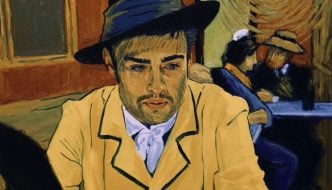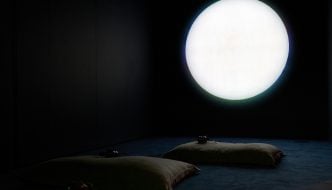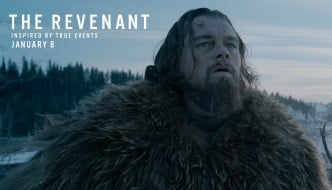An Interview With 3D Artist Jakub Goda
July 12, 2015
[All images courtesy of Jakub Goda]
If you happened to be in London recently, navigating the tube system and fighting the rush-hour throngs, you might have noticed a new poster. It shows a London landscape being peeled back to reveal a network of underground tunnels with the tagline “It’s just as mega beneath”. You might have quickly glanced at it, not noticed it or just be relieved they got rid of those god-awful poetry cartoons (“Don’t push and squeeze, just say please”), but you almost certainly didn’t think about the 26-year-old Slovakian VFX specialist behind the image, who was heading a CGI team within Radoxist studio. TSOTA recently had the opportunity to interview Jakub Goda about the fascinating projects he has been involved in and his thoughts on the modern day use of CGI in films…

TSOTA: How did you get involved with visual effects? What was it that interested you?
JG: I think it started quite randomly actually. I remember being in a bookstore, I was maybe 15 at that point, when I saw a book about 3ds max. I remember that I felt very attracted to the look of those 3d objects, wireframes and the general look of the software interface. I began playing around with 3ds max and as I discovered all the different options and the extent to which visual effects are used nowadays in film-making, my initial spark of interest turned into more of a fascination.
TSOTA: How did you get involved with London Transport for their ‘Just as Mega Beneath’ campaign? What was the initial pitch and how did you develop and fulfil this?
JG: I was approached by my friend Radoslav Zilinsky, who runs a studio called Radoxist studio as had received a brief from London based advertising agency TMP Worldwide. I was heading the CGI team and Radoslav did all the postproduction and art-direction. We had four guys who helped us with modelling and texturing the buildings in the visual.

We saw that it was a big project, interesting client and a cool brief so from the very first moment we were like “let’s do this!”. The brief from the agency was a short presentation with hand-drawn sketches and mood boards introducing the idea of building an aerial view on part of London and uncovering part of the rich underground world full of trains, stations etc. to show the richness of London’s transport world.
Making Of Just as Mega Beneath from Jakub Goda on Vimeo.
TSOTA: How much creative freedom do you have when working on a project? Do you consider yourself a technician or an artist?
JG: In terms of the initial idea behind the visual, in terms of its concept and message that’s an agency’s job. My job is to take their idea, usually expressed as a sketch or quick photoshop collage, and push it as far as possible delivering polished high-end, high resolution detailed imagery. Creativity from my side is reflected in the general mood of the final image- in its lighting, atmosphere, colours, shapes and all the details. I don’t see myself neither as an artist nor purely as a technician. I think that a 3d artist’s work lies somewhere in between the two. It’s technical to some extent, because you need to be able to understand and handle quite complex software and processes behind it, but at the same time, it’s not enough just to be able to locate and push the buttons. If you want to create nice images, regardless of the technique you are going to use, it will always reflect your taste, visual preferences and general sense of aesthetics.

TSOTA: What’s the most impressive use of VFX you’ve seen recently?
JG: Well currently everybody is crazy about Mad Max and I can understand why, because the movie has a very unique style and the whole thing really works even though relentless action is not really my cup of tea. Interstellar was interesting in the way that they used effects because they teamed up with actual scientists and recreated the look of the black hole not just based on someone’s artistic vision, but they built a whole new renderer in which they tried to simulate what the black hole might actually look like. The outcome was not just the movie, but a couple of serious scientific papers as well.
TSOTA: Can you think of examples of feature films where audiences might not recognise these ‘invisible effects’? What, for you personally, are the most impressive examples?
JG: Invisible effects are in many cases my favourite kind of effects, because they are not trying to overwhelm you, but they humbly serve the director’s vision of a movie. A good example is The Curious Case of Benjamin Button where they managed to create a full CGI version of ageing Brad Pitt or the subtle but cool effects used in Black Swan.
Invisible Effects from Jakub Goda on Vimeo.
TSOTA: How do you feel when you see bad CGI?
JG: Good CGI should look convincing and it should blend with the rest of the movie without disturbing you and making you ask the question “What the hell was wrong with that?”. If that happens, it drives the viewer’s attention away from the actual movie itself and its storytelling and that makes the viewer’s experience much less worthwhile.
TSOTA: What is your opinion on the resurgence of 3D in film and television?
JG: Obviously I’m glad about the popularity of CGI and VFX in general, but on the other hand I’m not really that happy about the way it is overused or misused in a whole bunch of multi-hundred dollar Hollywood blockbusters. There is a whole category of movies that rely almost entirely on visual effects instead of traditional film making disciplines such as story, script, actors etc. They are overloaded with massive high-end visual effects but they lack many aspects of what makes a good movie and therefore overall it doesn’t really work even though the effects are impressive and seamless and in many cases done by the very best people in the industry.
TSOTA: Is VFX being utilised in ways that people might not expect – for example, away from the advertising and entertainment industry?
JG: CGI is obviously massively used in the games industry as well as in the architectural industry for creating realistic architectural visualizations. Then of course in fields such as product design or automotive design. It’s also used for visualizing in the medical industry and in law to create forensic 3d animations to recreate events such as accidents, assaults, robberies and other crimes. I believe it is used quite extensively in engineering as well, where it’s not so much about looking amazing, but it’s just supposed to visually demonstrate how something works.
TSOTA: What’s your favourite aspect of creating visual effects? Is there something you specialise in and enjoy the most?
JG: I probably enjoy most the phase when I have all the assets (models, textures etc.) more or less ready and I play with lighting, shaders and the general mood of the image to bring it to life. I also like to switch between 2d and 3d, because there are different things you can do in both and sometimes you need to experiment whether you can fake something in postproduction or you actually need to do it in 3d. Sometimes the raw render might look quite boring, but just by doing some colour correction and blending some additional layers from 3d to your original render it might push it much further and I can see immediately what else I need to do. This back and forth process of playing with the image in 3d then in 2d and then back in 3d is very playful and I really enjoy it.

TSOTA: What piece of work are you most proud of?
JG: Well currently the London Underground project is definitely the one I would mention first, but I have some other pieces in my portfolio that I’m quite proud of as well. Recently I finished another relatively large visual with Slovak ad agency Triad Advertising where I was working with scanned 3d people models and before that I did some pretty cool collaborations with my friend, photographer Matus Bence. I’m also proud of some of the TV projects that I’ve had the chance to work on in the past and on my short collaborations with studios such as Platige Image or Happy Finish.

TSOTA: Are there any juicy unknown secrets about the creation of visual effects?
JG: Visual effects is the art of faking, it’s about convincing the audience that what they see is real when in fact it is not at all. Many times there is not a single right way of doing that and you need to experiment in order to find out what works. It also works to your advantage to simplify things as much as possible. Where there is no need to use high-res 3d model, you just use low-res. If possible you don’t use 3d at all if you don’t really need it and you don’t care about parts that are not visible to the camera – for example, some buildings in the London Underground visual have holes at the back of them. Backgrounds in movies are in most cases just composites of various 2d layers.
In the realm of 3d illustration for print, realism might be slightly less important in some cases. More important is stylisation or illustrative look, but obviously if you are mixing something with photo elements or compositing CG in photo, it needs to be seamless.
TSOTA: What’s the most exciting innovation currently happening in the world of visual effects? What do you think is the future of VFX and what can it achieve?
JG: I think there are several interesting things going on. For example drones were used in Mad Max to take photos of terrain on set for photogrammetry – to recreate the terrain in 3d. They were basically systematically flying around and taking loads of photos. I generally like the progress that is being made in photogrammetry technology and I hope there are certain things that I won’t ever need to manually model again. Advances in photogrammetry (recreation of 3d surfaces/objects from photos) or motion capture (capturing the actor’s performance in order to reuse it on digital character) enable artists to be able to focus on other things, things that might be more stylized or unrealistic in some way. I think it’s moving us in the right direction in the sense that things that are supposed to look like a replicate of some real object or movement will be simply processed out of the data set and things that are supposed to have some kind of human touch will be hand made.
Regarding the future of VFX, I really hope it will be adopted by a wider range of film-makers and will become a normal part of the production even in independent or low-budget movies. I’m also curious what will happen to heavily VFX-based blockbusters, if the boom will continue or if it will attenuate over time and people will no longer accept movies that give them just mind-blowing visual effects.
TSOTA: What are you working on at the moment?
JG: At the moment I’m just finishing lots of small visuals, pay-my-bills kind of work. I have a couple of new clients who approached me with some interesting projects so I look forward to those and I also have one personal project in mind that I would finally like to work on over the summer.
Interview by Joe Saxon
For more on Jakub Goda visit his website godevfx.com
Filed under: Art & Photography, Film, TV & Tech
Tagged with: advertising, CGI, film, invisible effects, Jakub Goda, London Underground, visual effects



Comments